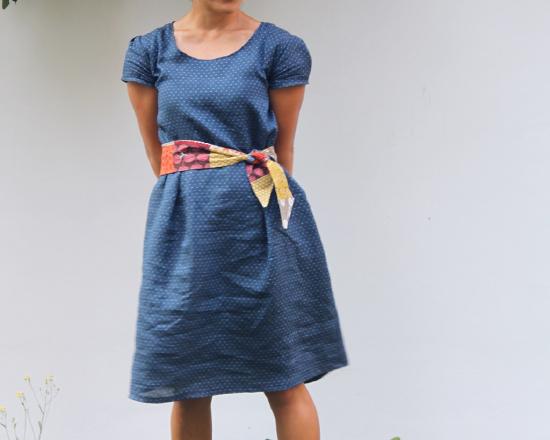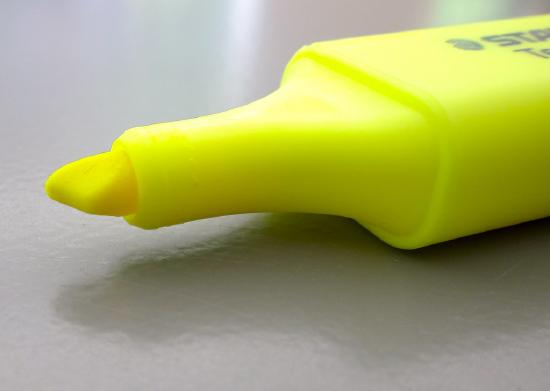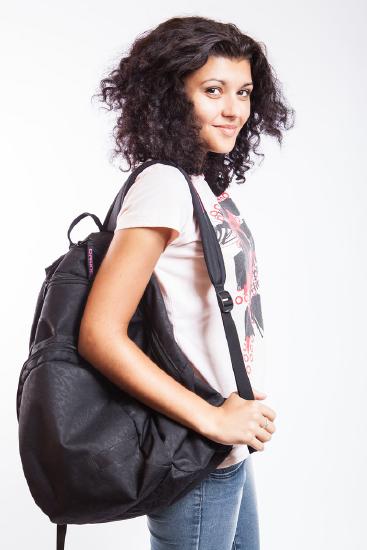1.6: Definite and indefinite articles (Gender and number)
- Page ID
- 44520
In Spanish, all nouns have grammatical “gender.” Nouns may be “masculine” or “feminine,” but unless it is a living, breathing creature, grammatical gender is totally arbitrary.
When we refer to “number,” we are talking about whether the noun is singular or plural.
- Definite articles are used when you have a specific item in mind.
- The English equivalent is “The.”
- In Spanish, there is a “the” for each Gender/Number combination:
El - el profesor
(Masculine & Singular)
La - la profesora
(Feminine & Singular)
Los - los animales
(Masculine & Plural)
Las - las manzanas
(Feminine & Plural)
- Indefinite articles are used when you do not have a specific item in mind.
- The English equivalent is “a” for singular nouns and “some” for plural nouns.
- In Spanish, there is an indefinite article or each Gender/Number combination.
Un - un libro
(Masculine & Singular)
Una - una chica
(Feminine & Singular)
Unos - unos amigos
(Masculine & Plural)
Unas - unas galletas
(Feminine & Plural)


Los patrones : patterns
- A language is a system of patterns, and once we recognize a pattern, we can use it to our advantage. Using patterns to help determine the gender of nouns is a good example of this.
- Of course, there are always exceptions to the “rule,” so when you encounter a word that deviates from the pattern, spend extra time studying it.
- Since we do not have gendered nouns in English, it is easy to underestimate the importance of this concept in Spanish. When learning new nouns, always practice them with their gender.
Masculine Nouns
Nouns that end in –o
El libro, el vestido, el escritorio, el plato
Nouns that end in a consonant
El ordenador, el lápiz, el reloj
Nouns that end in –e*
El estante, el ambiente, el timbre
Nouns that end in –ma and –pa AND are cognates**
El problema, el sistema, el programa, el fantasma, el mapa
*We see more exceptions than usual with this group, but odds are that it will be masculine. Common feminine exceptions are: la clase, la noche, la tarde.
**Cognates are words that look alike, sound alike and mean alike in both languages.

Feminine Nouns
Nouns that end in –a
La computadora, la corbata, la cámara, la manzana, la mesa
Nouns that end in –ión (the English equivalent is “tion)
La solución, la situación, la comunicación, la complicación
Nouns that end in –ad (the English equivalent is “ty”)
La comunidad, la universidad, la libertad, la humanidad

Reminder—unless you are talking about a living, breathing creature,
GENDER IS ARBITRARY.
Is a table inherently feminine? No. Are shoes inherently masculine? No.
Sometimes we even see two words for the same thing and one is masculine and the other is feminine, such as the words for “pen” and “computer.”

Describing People and Pets
Females
La señora, la mujer, la chica, la estudiante, la perra*, la gata*
*People who know that their pet is female will use the feminine form. If the sex of a pet or animal is unknown, the masculine form is typically used.
Males
El señor, el hombre, el chico, el estudiante, el perro, el gato
Transgender and non-binary individuals
For individuals who identify as male or female, always use the grammatical gender that corresponds to a person’s identity. To ask someone what their pronouns are, ask: “¿Cuál es su pronombre?” To respond, answer: “Mi pronombre es ________.” Fill in the blank with él (he), ella (she), or another pronoun such as elle (non-gendered, singular). With that said, non-binary pronouns such as elle are newly emergent and may not be widely used or understood.
Spanish, as a highly gendered language, has not yet adapted systematically to account for non-binary identities. There is a movement to use terms such as Latinx, although the “x” is not currently used in sentence structure and is not yet widely used outside of the United States. The use of –e endings instead of –o or –a endings on gendered nouns, articles, and adjectives has also emerged from Spanish-speaking communities. While there currently is not a unanimously accepted solution for how to approach gender agreement for non-binary individuals, language evolves alongside the communities that use it to express their life experiences, and this is an ongoing conversation. If you are non-binary, you may choose to initiate a conversation with your instructor to discuss ways that you can use the language to best describe yourself.
Groups
Groups are only feminine when every member of the group is female. If one male is present, the group will become masculine.

En la universidad
Work with a partner to guess the gender of each of these vocabulary words—use pencil. Then, we will check them together as a class and discuss the meaning of each word.
________ bolígrafo ________
________ calculadora__________________________
________ computadora_________________________
________ cuaderno____________________________
________ diccionario__________________________
________ lápiz_______________________________
________ libro________________________________
________ mapa_______________________________
________ marcador____________________________
________ destacador___________________________
________ pupitre______________________________
________ mesa_______________________________
________ mochila_____________________________
________ papel_______________________________
________ pizarra______________________________
________ reloj________________________________
________ silla________________________________
________ celular______________________________
________ clase_______________________________
________ edificio_____________________________
________ cafetería____________________________
________ librería ________
________ biblioteca___________________________
________ gimnasio____________________________
________ centro estudiantil______________________



La pluralización
Before putting this new vocabulary to use, let’s look at how to make words plural in Spanish.
In addition to pluralizing the noun itself, the article must ALSO match in gender and number.
El or La becomes Los or Las
Un or Una becomes Unos or Unas
If a word ends in a vowel, add –s
El libro becomes ________
La manzana becomes ________
Un pupitre becomes ________
Una mesa becomes ________
If a word ends in a consonant, add –es
El reloj becomes_______________________________
Un marcador becomes ________
La universidad becomes_________________________
Una comunidad becomes ________
If a word referring to a person ends in –dor, or a nationality that ends in a consonant, add -a, -es, or -as depending on the Gender/Number of the person or people.
Mi padre es trabajador. = my dad is hardworking.
Mi madre es ________. = my mom is hardworking
Mis padres son ________. = my parents are hardworking.
Antonio Banderas es español. = Antonio Banderas is Spanish.
Penélope Cruz es ________. = Penelope Cruz is Spanish.
Pablo Picasso y Salvador Dalí son ________. = PP and SD are Spanish.
Special Pluralization Rules
If a word ends in -Z, the z changes to c when pluralized.
El lápiz becomes ________.
El pez becomes ________.
If a word has an accent on the final syllable, the accent goes away when pluralized.
La comunicación becomes ________.
El salón becomes ________.
Actividad 17
¿Qué hay? What is there? Using the expression hay (meaning there is or there are) and our school-related vocabulary, answer the following questions.
Use indefinite articles or numbers with hay (un/una/unos/unas). Do not use definite articles.
1. ¿Qué hay en tu mochila?
________
2. ¿Qué no hay en tu mochila?
________
3. ¿Qué hay en un salón de clase típico?
________
Actividad 18
¿Qué compraste para las clases? Tell me what you bought to get ready for the school year.
Yo compré...


Actividad 19
¿Qué necesitas para las clases? Name at least one item that you will need for each class.
1. Para la clase de arte, necesito ________.
2. Para la clase de matemáticas, necesito ________.
3. Para la clase de computación, necesito ________.
4. Para la clase de geografía, necesito_________________________________________________.
5. Para la clase de historia, necesito___________________________________________________.

Necesito unos lápices de color para la clase de arte.
Actividad 20
El espionaje. You have been recruited by an international security agency, and are taking part in an initial assessment to test your ability to recall information. As we all know, spies must rely upon their ability to observe and memorize information, as a paper trail can be deadly. To determine whether you will be admitted to their training program, you have been paired with another future agent for this test. First, determine who will be Agent X and who will be Agent Y. In case of a group of three, determine who will be Agent Z.
Round 1: Agent X will face the front of the classroom. Agents Y and Z will face the back of the room. Three to five classroom items will be displayed to Agent X at the front of the room for 10 seconds, then hidden. After 30 seconds, Agent X will tell Agents Y and Z what items were witnessed earlier, using “Hay”, current vocabulary words and their corresponding indefinite articles. Agents Y and Z will write down what Agent X tells them on their “Reportaje”. Lastly, the items will be redisplayed for all to see. If Agent X was able to accurately communicate all of the items with their corresponding indefinite article and if Agents Y and Z were able to understand and make note of what they were told by Agent X, all of the agents are still in the running to be admitted to the program.
Rounds 2 and 3: Repeat the assessment with different items for Agents Y and Z.
Reportaje del Agente ________
Reportaje del Agente ________


